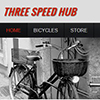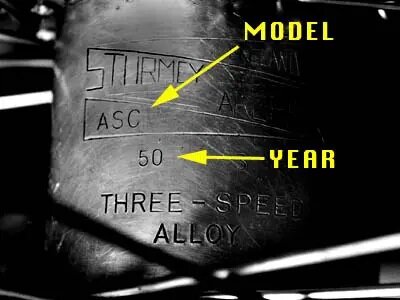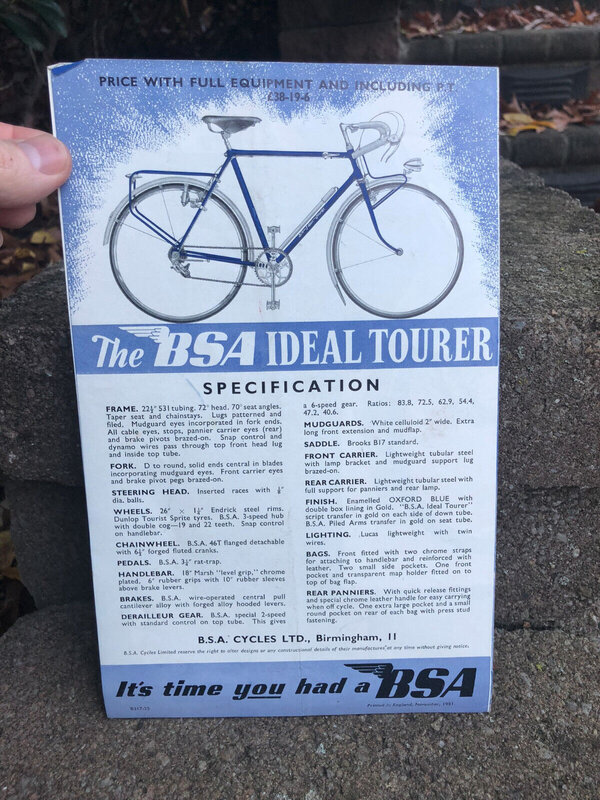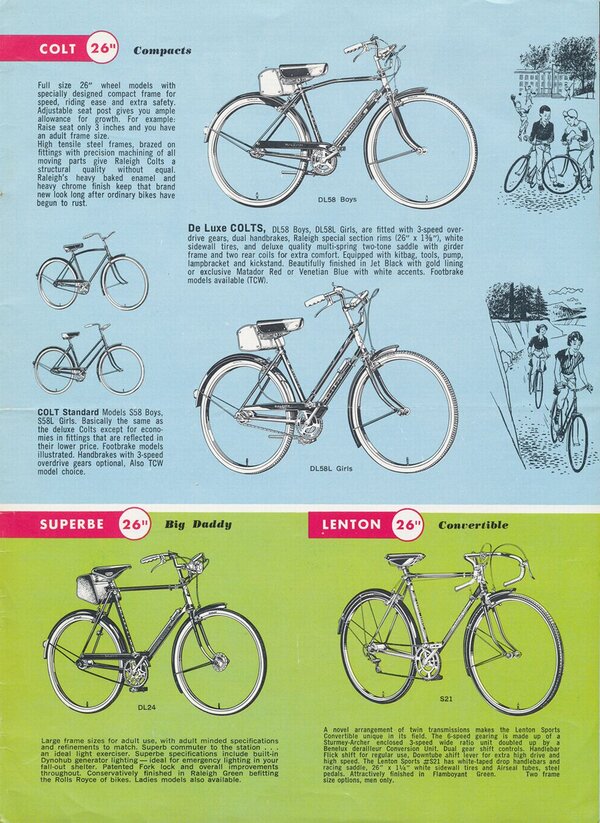GettingInGear
Retro Newbie
Hello everyone,
I'm brand new here. This seems to be the greatest place to come ask such questions, so here I go...
According to my father, my uncle rode this bike to win a race at Harvard University back in the 1950s. It was the Harvard/Wellesley Race, 26 miles. When he won, he was awarded a new bike, and he sold this bike to my father. My father rode it for years and years, I remember he rode it for family bike rides. Now, he is ready to sell it, as he is sadly not limber enough to ride anymore. (He was 6' 5" back then, and told me he installed a custom taller seat post, as my uncle was a bit shorter)
My Dad has always referred to this bike as a Dawes Flambeau, but I only see the Dawes Cycle name on the head badge, I don't see any mention of the Flambeau name.
So far, I don't have any other numbers or words from anywhere on the bike, but I can get that. It has a few desirable features: the Reynolds 531 tubing, Sturmy Archer shifter, a generator on the rear wheel that powers the light(s), Brooks leather seat, aluminum mud guards/fenders. I believe all parts are original except perhaps the tires.
So, could folks tell me:
1) What year was this bike made?
2) Is this a Dawes or a Dawes Flambeau brand?
3) What is the model name? Is it a Tartan Touring? I saw one in this blog,
4) What is this color called? It's a bit grimy, but it's like a brownish purple.
5) What is it worth, even a range, given that it has not been inspected yet.
(It will be sold in or near Massachusetts, USA)
Thanks so much everyone!
I'm brand new here. This seems to be the greatest place to come ask such questions, so here I go...
According to my father, my uncle rode this bike to win a race at Harvard University back in the 1950s. It was the Harvard/Wellesley Race, 26 miles. When he won, he was awarded a new bike, and he sold this bike to my father. My father rode it for years and years, I remember he rode it for family bike rides. Now, he is ready to sell it, as he is sadly not limber enough to ride anymore. (He was 6' 5" back then, and told me he installed a custom taller seat post, as my uncle was a bit shorter)
My Dad has always referred to this bike as a Dawes Flambeau, but I only see the Dawes Cycle name on the head badge, I don't see any mention of the Flambeau name.
So far, I don't have any other numbers or words from anywhere on the bike, but I can get that. It has a few desirable features: the Reynolds 531 tubing, Sturmy Archer shifter, a generator on the rear wheel that powers the light(s), Brooks leather seat, aluminum mud guards/fenders. I believe all parts are original except perhaps the tires.
So, could folks tell me:
1) What year was this bike made?
2) Is this a Dawes or a Dawes Flambeau brand?
3) What is the model name? Is it a Tartan Touring? I saw one in this blog,
5) What is it worth, even a range, given that it has not been inspected yet.
(It will be sold in or near Massachusetts, USA)
Thanks so much everyone!
Attachments
-
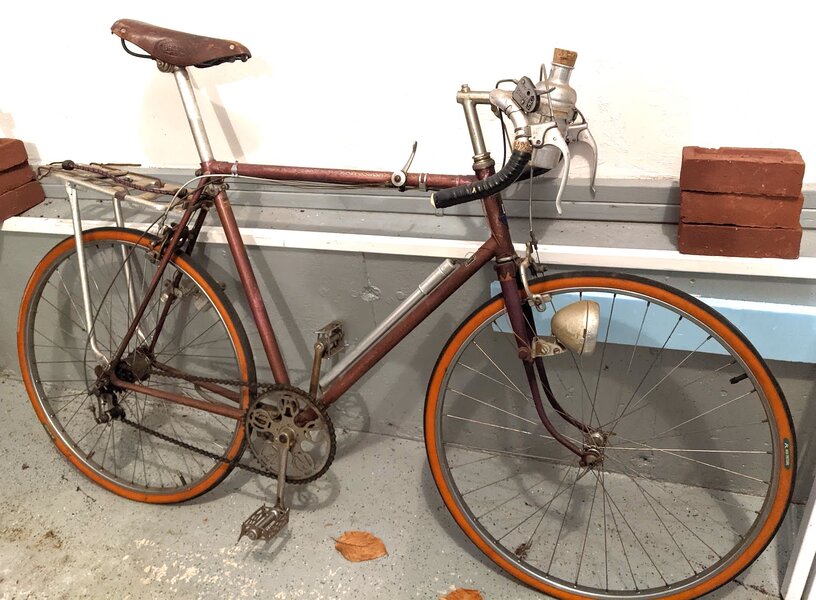 Dawes fullview (REGAL pedal mount) .jpg345.2 KB · Views: 47
Dawes fullview (REGAL pedal mount) .jpg345.2 KB · Views: 47 -
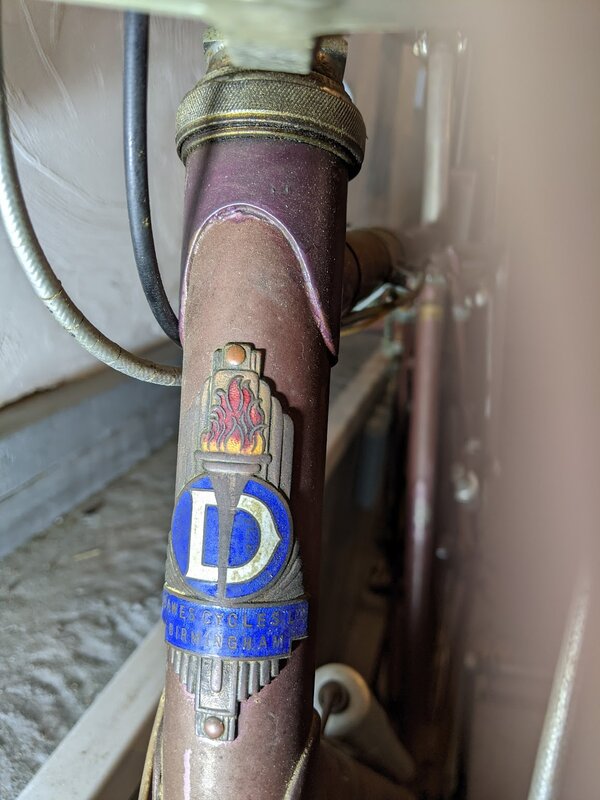 Dawes Cycles Birmingham Head Badge.jpg211.8 KB · Views: 40
Dawes Cycles Birmingham Head Badge.jpg211.8 KB · Views: 40 -
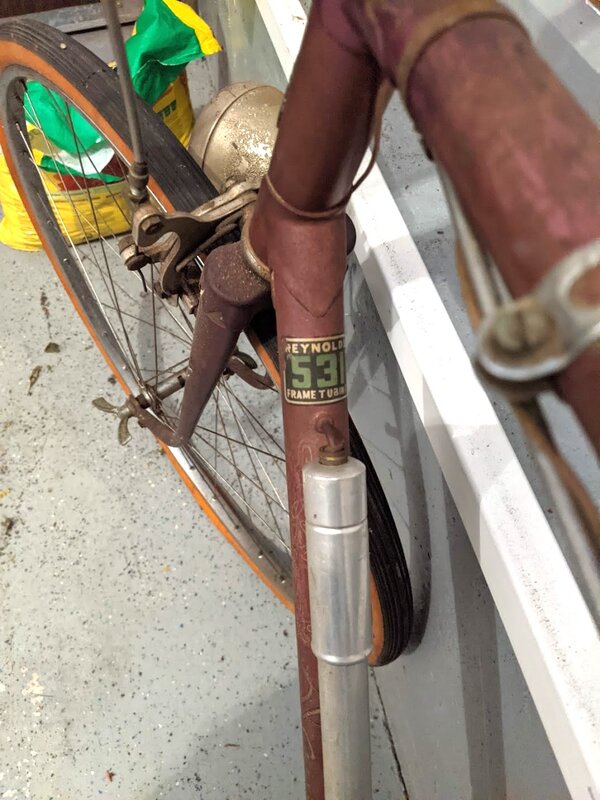 Dawes Reynold's 531 aluminum sleeve joint frame.jpg193 KB · Views: 31
Dawes Reynold's 531 aluminum sleeve joint frame.jpg193 KB · Views: 31 -
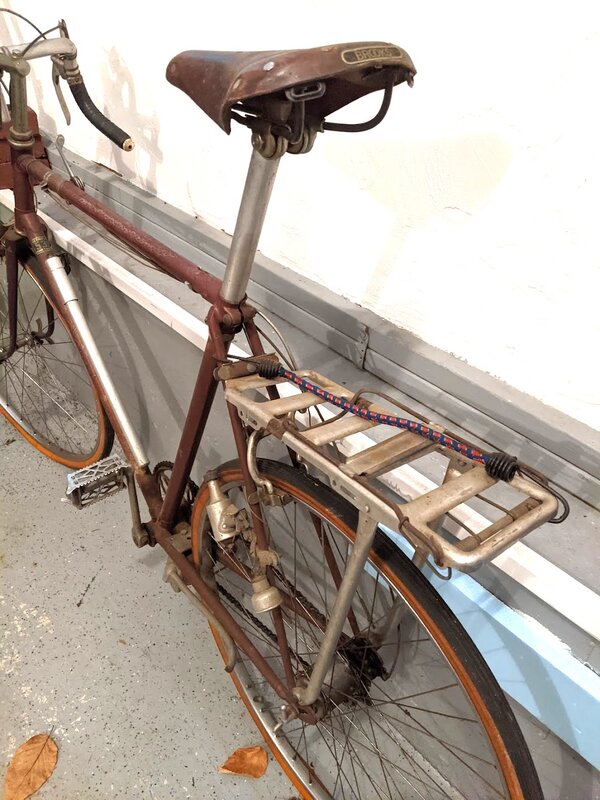 Dawes back view with generator?.jpg225.1 KB · Views: 30
Dawes back view with generator?.jpg225.1 KB · Views: 30 -
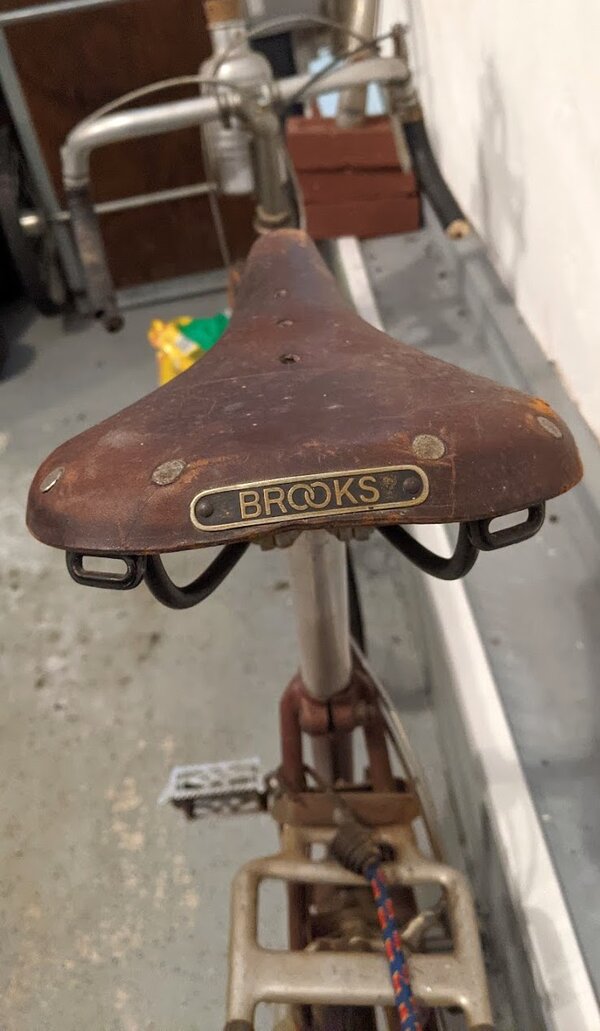 Brooks Leather Seat.jpg100 KB · Views: 28
Brooks Leather Seat.jpg100 KB · Views: 28 -
 Dawes mud guards.jpg87.8 KB · Views: 26
Dawes mud guards.jpg87.8 KB · Views: 26 -
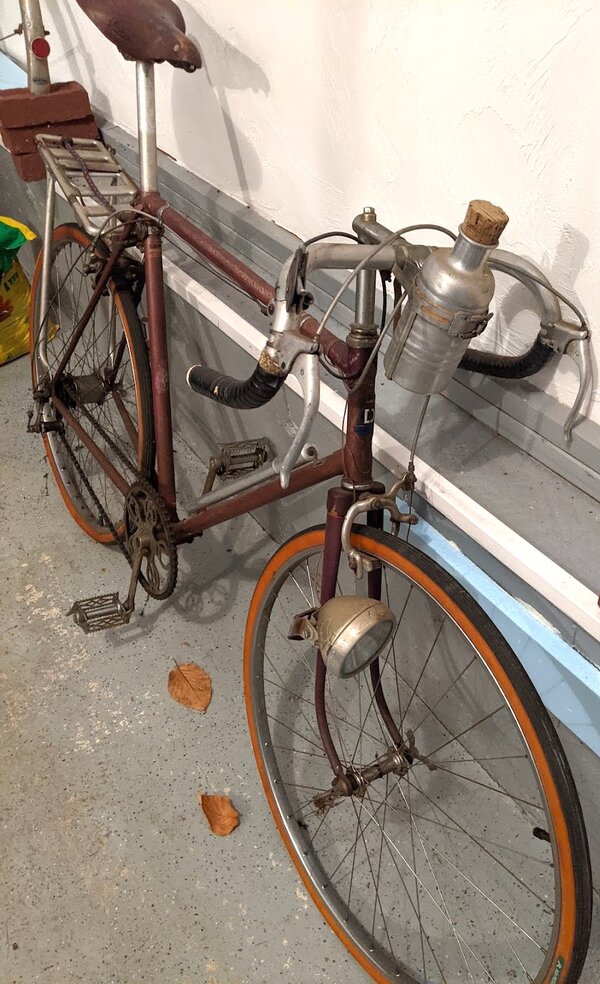 Dawes front end .jpg240.1 KB · Views: 27
Dawes front end .jpg240.1 KB · Views: 27 -
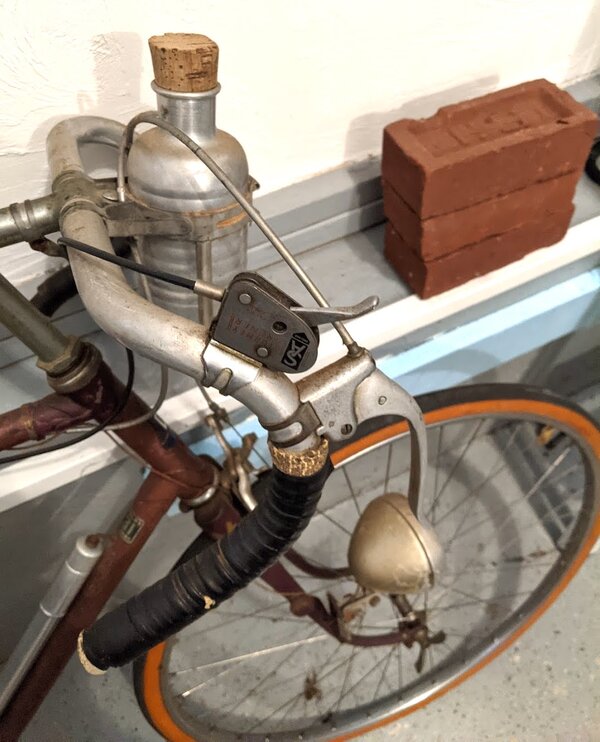 Dawes 3 speed Sturmy Archer click shift .jpg172.7 KB · Views: 28
Dawes 3 speed Sturmy Archer click shift .jpg172.7 KB · Views: 28 -
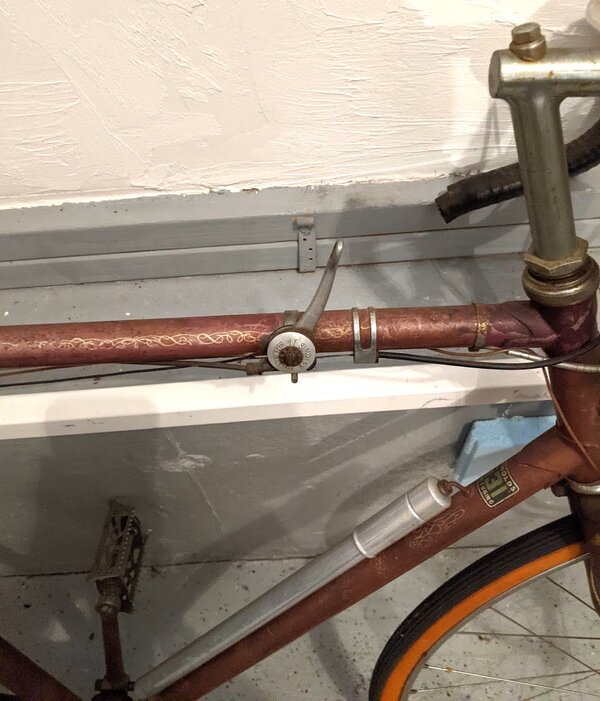 Dawes 3 speed De railleur shift on frame .jpg173.3 KB · Views: 45
Dawes 3 speed De railleur shift on frame .jpg173.3 KB · Views: 45
Last edited:
